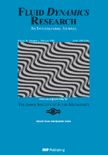
FLUID DYNAMICS RESEARCH
Scope & Guideline
Fostering Collaboration in Fluid Dynamics Research
Introduction
Aims and Scopes
- Theoretical Fluid Dynamics:
Research in this area includes the development and analysis of mathematical models and theories that describe fluid motion, including turbulence, stability, and wave phenomena. - Numerical Simulations:
The journal publishes studies employing various numerical methods to solve fluid dynamics problems, such as Computational Fluid Dynamics (CFD), Lattice Boltzmann methods, and Direct Numerical Simulations (DNS). - Experimental Fluid Mechanics:
Papers often report experimental findings that validate theoretical models or numerical predictions, exploring phenomena like flow visualization, drag reduction, and fluid-structure interactions. - Interdisciplinary Applications:
Fluid Dynamics Research explores the application of fluid mechanics in various fields, including biomedical engineering, environmental science, and energy systems, showcasing how fluid dynamics principles can solve real-world problems. - Complex Fluid Behavior:
The journal addresses the behavior of complex fluids, such as non-Newtonian fluids, multiphase flows, and nano-fluids, focusing on their unique properties and behaviors under different flow conditions.
Trending and Emerging
- Machine Learning in Fluid Dynamics:
An increasing number of studies apply machine learning techniques to analyze fluid flow data, optimize simulations, and develop predictive models, indicating a trend towards integrating artificial intelligence in fluid mechanics. - Multiphase and Complex Fluid Flows:
There is a growing emphasis on studying multiphase flows and complex fluids, such as colloids, emulsions, and nanofluids, which are critical in various industrial and biomedical applications. - Fluid-Structure Interaction:
Research on the interaction between fluids and structures has gained traction, with studies focusing on how fluid dynamics affects structural integrity, especially in biomedical applications and aerospace engineering. - Environmental Fluid Dynamics:
An increasing number of papers address environmental applications, including pollutant dispersion, climate modeling, and renewable energy systems, reflecting a broader concern for sustainability and environmental impact. - Advanced Numerical Techniques:
There is a trend towards the development and application of novel numerical methods, such as high-order methods and hybrid approaches, to solve increasingly complex fluid dynamics problems.
Declining or Waning
- Low Reynolds Number Flows:
Research focused on low Reynolds number fluid flows appears to be decreasing, possibly due to a shift towards more complex fluid dynamics phenomena or higher Reynolds number applications that have broader implications in engineering and technology. - Traditional Turbulence Models:
There has been a notable reduction in studies dedicated to classical turbulence modeling approaches, such as simple k-ε models, as the field moves towards more sophisticated, data-driven, and machine learning-based turbulence modeling techniques. - Static Fluid Analysis:
Papers centered solely on static fluid analysis or equilibrium states have waned, indicating a preference for dynamic studies that encompass transient phenomena and time-dependent behaviors in fluid systems.
Similar Journals
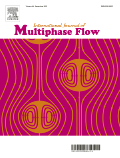
INTERNATIONAL JOURNAL OF MULTIPHASE FLOW
Championing Excellence in Multiphase Flow StudiesINTERNATIONAL JOURNAL OF MULTIPHASE FLOW, published by Pergamon-Elsevier Science Ltd, is a premier platform dedicated to the dissemination of cutting-edge research in the field of multiphase flow. With an impressive impact factor and ranking in the Q1 category across various disciplines including Fluid Flow and Transfer Processes, Mechanical Engineering, and Physics and Astronomy, this journal serves as a crucial resource for researchers and professionals aiming to advance knowledge and applications in fluid dynamics. Since its inception in 1973, the journal has established a distinguished legacy, providing a venue for high-quality research articles, comprehensive reviews, and technical notes that push the boundaries of current understanding. Although it does not offer Open Access options, its rigorous peer-review process ensures that only the most relevant and significant contributions are published, making it a vital source for students and experts alike striving for excellence in their fields. The journal is based in Kidlington, Oxford, United Kingdom, and continues to be a pivotal part of scholarly discourse in multiphase flow research.

Journal of Nanofluids
Fostering Global Collaboration in Nanofluid ResearchJournal of Nanofluids, published by AMER SCIENTIFIC PUBLISHERS, is a leading international journal dedicated to the burgeoning field of nanofluid technology which bridges the areas of fluid dynamics and nanotechnology. With an ISSN of 2169-432X and E-ISSN of 2169-4338, this journal has established itself as a valuable resource for researchers and professionals in Mechanical Engineering and Chemical Engineering, particularly in the domains of fluid flow and transfer processes. Its prestigious standing is reflected in the 2023 Scopus rankings, positioning it in the 79th percentile for Mechanical Engineering and the 78th percentile for Fluid Flow and Transfer Processes. Although coverage has been discontinued in Scopus since 2021, the journal maintains a Q2 category ranking in both relevant fields, emphasizing its commitment to high-quality and impactful research dissemination. This journal aims to foster innovation and collaboration among scientists and engineers worldwide, providing a platform for groundbreaking research, reviews, and discussions on nanofluids, their properties, and applications. As an essential addition to the library of any researcher or student vested in advanced fluid dynamics, the Journal of Nanofluids serves as a pivotal conduit for advancing knowledge and technology in this exciting and evolving field.

Journal of the Serbian Society for Computational Mechanics
Transforming Ideas into Engineering SolutionsJournal of the Serbian Society for Computational Mechanics, published by the Serbian Society for Computational Mechanics, is a vital platform for advancing research and knowledge in the field of computational mechanics. Established in 2012, this journal serves the academic community by providing a forum for innovative studies, methodologies, and applications within computational mechanics, presenting valuable insights for researchers, professionals, and students alike. With an ISSN of 1820-6530 and a ranking of Q4 in Computational Mechanics, it carries an essential influence in the engineering realm, despite its current rank of 71 out of 89. The journal's commitment to scholarly excellence aims to foster collaboration and encourage interdisciplinary research, making it an important resource for those invested in the evolving landscape of computational methodologies. Although the journal currently does not offer Open Access options, it remains dedicated to disseminating knowledge that will resonate within the local and global scientific community.
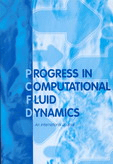
PROGRESS IN COMPUTATIONAL FLUID DYNAMICS
Advancing the Frontiers of Fluid Dynamics ResearchPROGRESS IN COMPUTATIONAL FLUID DYNAMICS, published by InderScience Enterprises Ltd, is a vital journal in the realms of Computer Science Applications and Condensed Matter Physics. Established in 2001, this journal serves as a platform for disseminating innovative research findings and technological advancements in computational fluid dynamics, targeting both theoretical and applied aspects. With a current impact factor positioning it in the Q4 quartile for its fields, it captures a wide array of topics including numerical methods, simulation techniques, and real-world fluid dynamics applications, fostering dialogue among researchers, practitioners, and educators alike. Although it does not provide Open Access options, it remains an important resource for those investigating fluid dynamics phenomena. As it continues to evolve through 2024, PROGRESS IN COMPUTATIONAL FLUID DYNAMICS is positioned to contribute significantly to the scientific community, addressing core challenges while promoting collaboration and knowledge exchange.

Flow
Advancing the frontiers of aerospace and biomedical engineering.Flow is a premier open access journal published by Cambridge University Press, dedicated to advancing research in the fields of Aerospace Engineering, Biomedical Engineering, and Fluid Flow and Transfer Processes. Launched in 2021, Flow has rapidly gained recognition and has achieved a prestigious Q1 ranking in its categories for 2023, underscoring its influential role in disseminating high-quality research. With an emerging impact factor and a strong commitment to accessibility, the journal provides a crucial platform for researchers, professionals, and students to share innovative findings and foster collaboration across disciplines. Flow is headquartered in the United Kingdom and is part of Cambridge University's effort to promote scholarly communication that transcends traditional barriers. Whether you are looking to submit your work or explore cutting-edge studies in your field, Flow offers a dynamic and rigorous environment for intellectual exchange.
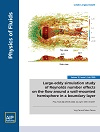
PHYSICS OF FLUIDS
Pioneering Discoveries in Fluid Flow and TransferPHYSICS OF FLUIDS is a premier journal published by AIP Publishing that serves as a vital resource for the fluid mechanics community. With an impressive impact factor and a consistent ranking in the Q1 quartile across multiple related disciplines—including Computational Mechanics, Condensed Matter Physics, Fluid Flow and Transfer Processes, Mechanical Engineering, and Mechanics of Materials—this journal is renowned for disseminating high-quality research in the dynamic field of fluid dynamics. Covering a wide range of topics, from fundamental fluid mechanics to advanced computational modeling, PHYSICS OF FLUIDS plays a crucial role in advancing understanding and fostering innovation in both academic and industrial applications. With its strong reputation and significant readership, this journal is essential for researchers, professionals, and students seeking to stay updated on the latest developments in fluid physics.
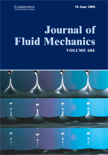
JOURNAL OF FLUID MECHANICS
Unraveling the complexities of fluid behavior.JOURNAL OF FLUID MECHANICS, published by Cambridge University Press, is a premier international journal recognized for its significant contributions to the field of fluid dynamics. With an esteemed impact factor that places it in the Q1 category across multiple disciplines, including Applied Mathematics, Condensed Matter Physics, Mechanical Engineering, and Mechanics of Materials, this journal serves as a vital resource for researchers and practitioners alike. Established in 1956, it provides a platform for innovative and high-quality research articles that advance the understanding of fluid mechanics phenomena. The journal's rankings underscore its prestige, with Scopus recognizing it among the top journals in its category. Although it currently does not offer open access, the journal remains accessible to educational institutions and professionals in the United Kingdom and beyond. By addressing critical and emerging topics in fluid mechanics, JOURNAL OF FLUID MECHANICS is essential for those striving to push the boundaries of knowledge and application in this dynamic field.

Fluid Dynamics
Exploring the intricacies of fluid dynamics since 1966.Fluid Dynamics is a distinguished journal that has been at the forefront of research in the field of fluid flow and transfer processes since its inception in 1966. Published by MAIK NAUKA/INTERPERIODICA/SPRINGER, this journal serves as a valuable platform for engineers, scientists, and researchers dedicated to advancing the understanding of mechanical and fluid dynamic phenomena. With a Q3 ranking in key categories such as Fluid Flow and Transfer Processes, Mechanical Engineering, and Physics and Astronomy, Fluid Dynamics holds a significant position in the academic community, attracting submissions that push the boundaries of knowledge and application. Although it does not currently offer open access options, the journal is recognized for its robust editorial standards and impactful contributions to the field, making it essential reading for anyone involved in fluid dynamics research. Given its consistent publication through to 2024, Fluid Dynamics continues to inspire innovation and collaboration in an ever-evolving scientific landscape.
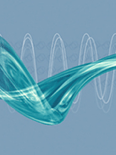
Annual Review of Fluid Mechanics
Synthesis of Knowledge in Fluid BehaviorThe Annual Review of Fluid Mechanics, published by Annual Reviews, is a premier journal in the field of fluid mechanics, dedicated to advancing our understanding of fluid behavior through comprehensive and critical reviews of contemporary research. With an impressive impact factor that reflects its stature—ranking Q1 in Condensed Matter Physics and positioned 4th out of 434 in Scopus’s Physics and Astronomy category—it stands as a vital resource for researchers, professionals, and students alike. Since its inception in 1970, the journal has provided vital insights and synthesized knowledge that drive innovations and applications across various scientific disciplines. Although it does not offer open access, the journal ensures rigorous editorial standards and captivating content that contributes meaningfully to the academic discourse in fluid dynamics. Published annually, the Annual Review of Fluid Mechanics continues to be a cornerstone for anyone interested in the complexities of fluid movement and its implications in both theoretical and practical contexts.
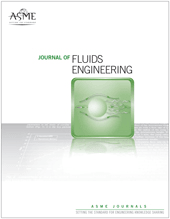
JOURNAL OF FLUIDS ENGINEERING-TRANSACTIONS OF THE ASME
Bridging Theory and Application in Fluid MechanicsJOURNAL OF FLUIDS ENGINEERING-TRANSACTIONS OF THE ASME, published by the renowned American Society of Mechanical Engineers (ASME), stands as a pivotal platform for disseminating cutting-edge research in the field of mechanical engineering, specifically focusing on fluid mechanics and its diverse applications. With an established history dating back to 1897, this journal features research that pushes the boundaries of knowledge and technology in areas such as fluid dynamics, thermal engineering, and hydrodynamics. Although it is not an open-access journal, it maintains rigorous peer-review standards, ensuring the publication of high-quality scholarly articles that contribute to the academic and professional community. In the latest rankings, it holds a respectable position within the Q2 category of mechanical engineering journals, reflecting its significant impact, as evidenced by its Scopus rank of #204 out of 672, placing it in the 69th percentile. Researchers, professionals, and students alike will find this journal to be a vital resource for the latest developments and innovative insights in fluids engineering.